Explore the best ground cover plants for your garden. Discover low-maintenance options that provide beauty, prevent erosion and create a lush landscape.
Ground cover plants are an excellent way to add beauty and functionality to your garden. These low-growing plants spread across the ground, providing attractive foliage and often colorful blooms while helping to prevent soil erosion and suppress weeds. In this guide, we’ll explore 20 of the best ground cover plants that offer low-maintenance solutions for various garden conditions.
Why Use Ground Cover Plants?
Before diving into our list, let’s consider the benefits of ground cover plants:
- Weed suppression
- Soil erosion control
- Water conservation
- Temperature regulation for soil
- Aesthetic appeal
- Low maintenance once established
Now, let’s explore our top 20 ground cover plants:
1. Creeping Thyme
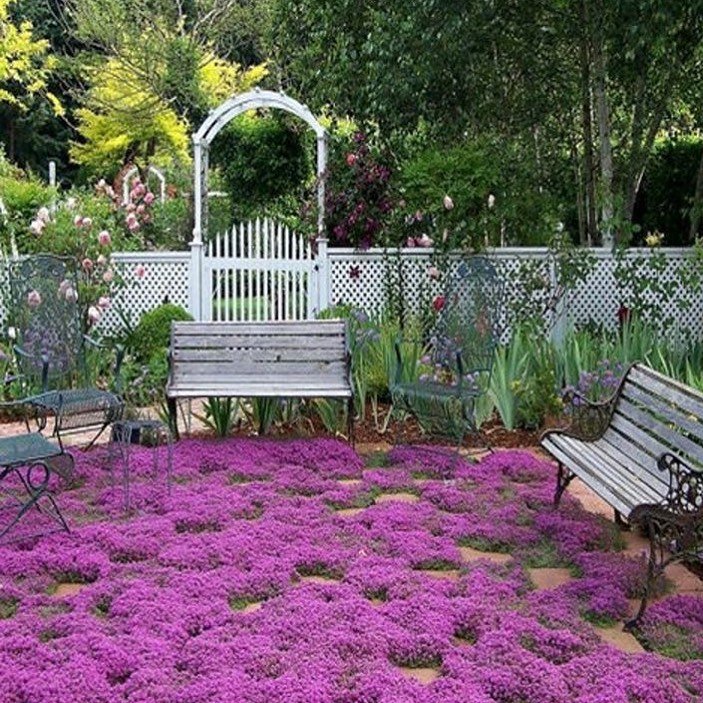
Here’s a simple and verified chart with detailed information about Creeping Thyme:
| Category | Information |
|---|---|
| Botanical Name | Thymus serpyllum |
| Common Name | Creeping Thyme |
| Plant Type | Herbaceous perennial |
| Hardiness Zone | USDA Zones 4-9 |
| Sun Exposure | Full sun |
| Soil Type | Well-drained, sandy or loamy soil |
| Watering | Low; drought-tolerant once established |
| Growth Habit | Low-growing, mat-forming ground cover |
| Height/Spread | 2-3 inches tall / 12-18 inches spread |
| Special Features | Fragrant, edible leaves, attracts pollinators, erosion control, low maintenance |
- Height: 2-4 inches
- Spread: 12-18 inches
- Sun: Full sun
- USDA Hardiness Zones: 4-9
Creeping thyme is a fragrant, drought-tolerant ground cover that produces tiny pink or purple flowers. It’s perfect for rock gardens and between stepping stones.
2. Sedum
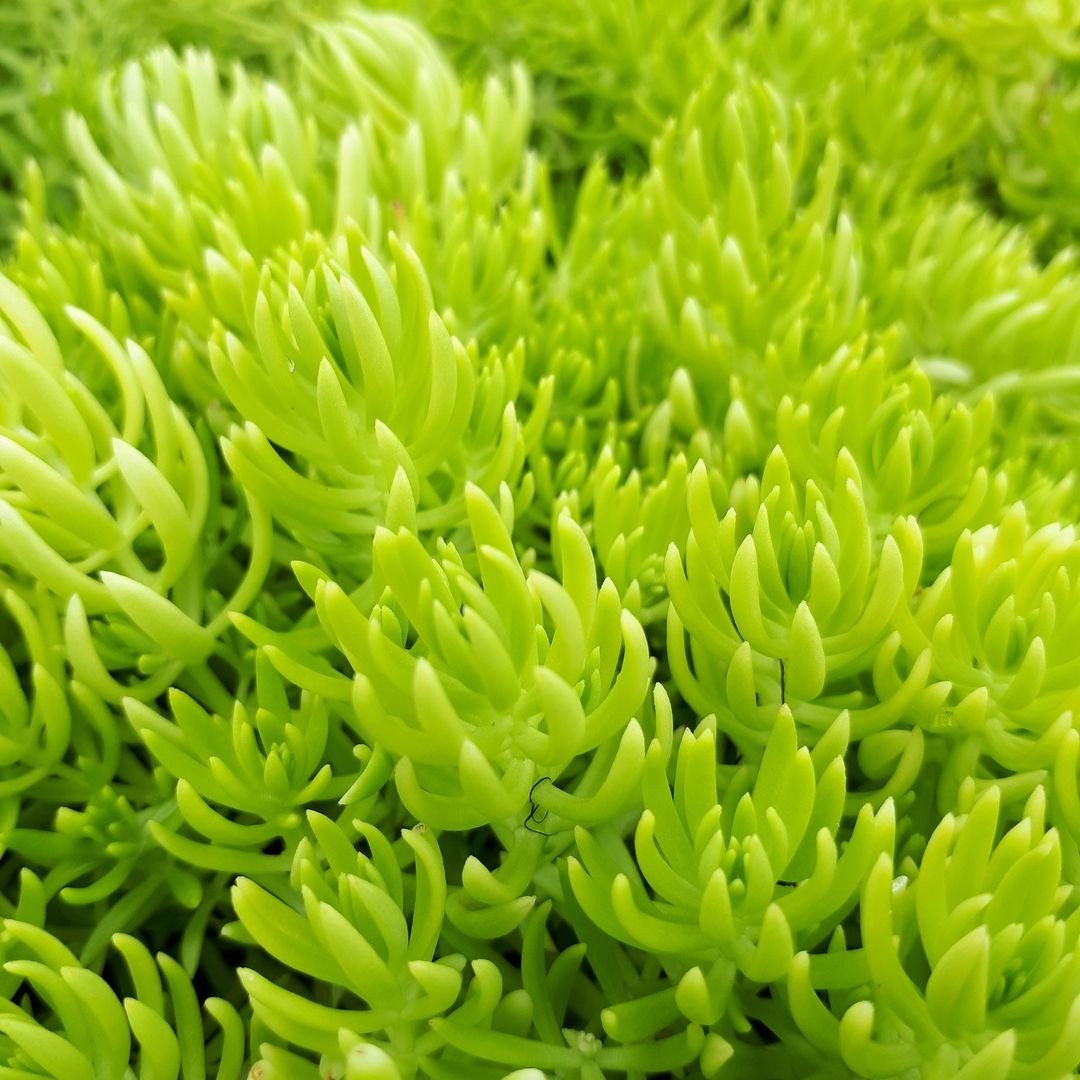
Here’s a simple and verified chart with detailed information about Sedum (general information, as there are many varieties):
| Category | Information |
|---|---|
| Botanical Name | Sedum (multiple species) |
| Common Name | Sedum, Stonecrop |
| Plant Type | Succulent perennial |
| Hardiness Zone | USDA Zones 3-10 (varies by species) |
| Sun Exposure | Full sun to partial shade |
| Soil Type | Well-drained, sandy or rocky soil |
| Watering | Low; drought-tolerant once established |
| Growth Habit | Mat-forming, spreading, or upright depending on species |
| Height/Spread | 2 inches to 2 feet tall / 6 inches to 2 feet spread (varies by species) |
| Special Features | Drought-tolerant, attracts pollinators, low maintenance, vibrant foliage and flowers |
- Height: 3-6 inches
- Spread: 12-24 inches
- Sun: Full sun to partial shade
- USDA Hardiness Zones: 3-10 (varies by species)
Sedum, also known as stonecrop, comes in many varieties with succulent leaves and star-shaped flowers. It’s extremely drought-tolerant and perfect for poor soil conditions.
3. Creeping Jenny
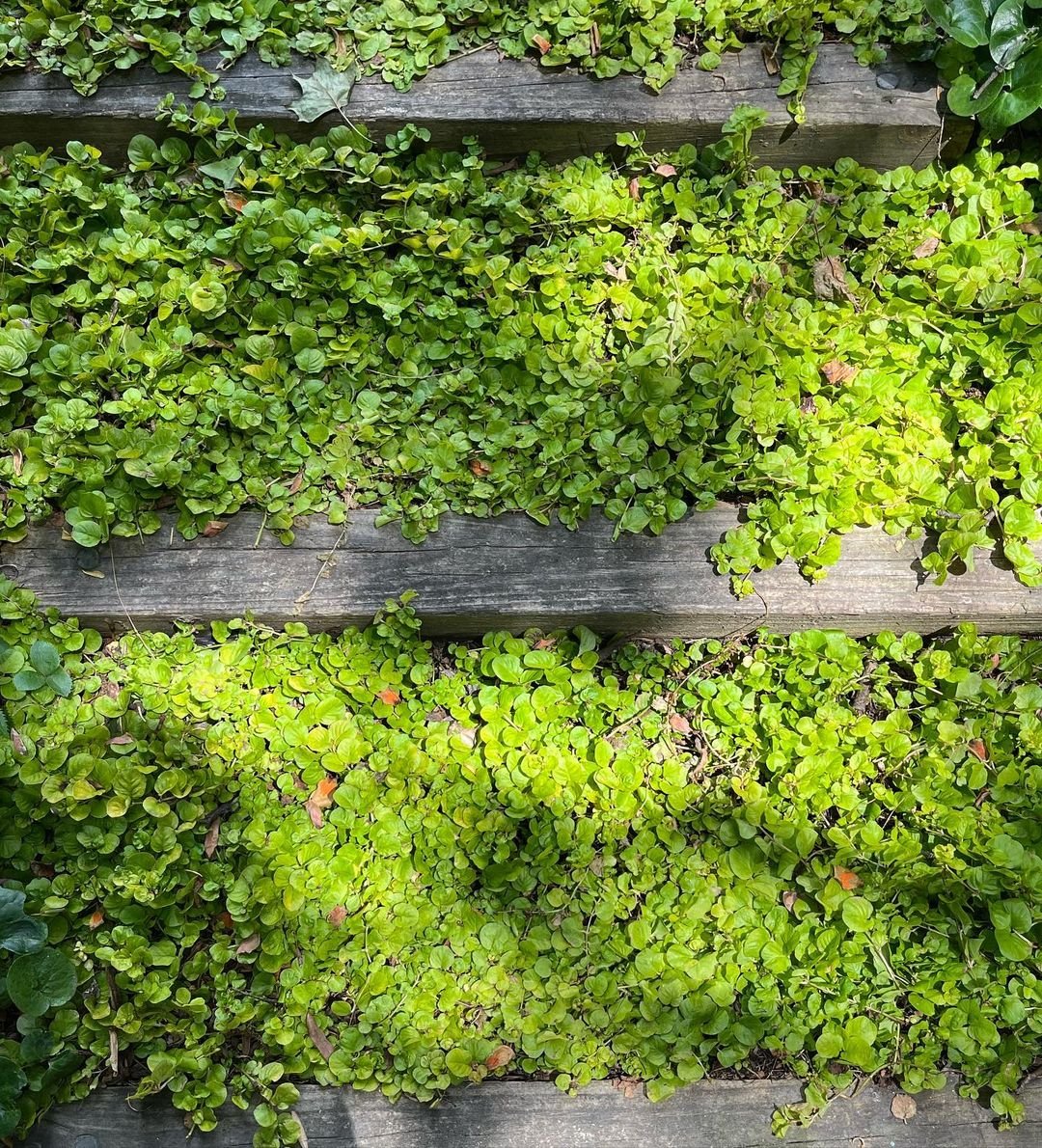
Here’s a simple and verified chart with detailed information about Creeping Jenny:
| Category | Information |
|---|---|
| Botanical Name | Lysimachia nummularia |
| Common Name | Creeping Jenny, Moneywort |
| Plant Type | Herbaceous perennial |
| Hardiness Zone | USDA Zones 3-9 |
| Sun Exposure | Full sun to partial shade |
| Soil Type | Moist, well-drained soil |
| Watering | Regular watering; prefers consistently moist soil |
| Growth Habit | Low-growing, trailing ground cover |
| Height/Spread | 2-4 inches tall / 12-18 inches spread |
| Special Features | Fast-growing, ground cover, yellow flowers, vibrant green or yellow foliage, erosion control |
- Height: 2-4 inches
- Spread: 18-24 inches
- Sun: Full sun to partial shade
- USDA Hardiness Zones: 3-9
Creeping Jenny features round, bright green leaves and yellow flowers. It’s a fast-growing option that works well in moist areas.
4. Ajuga
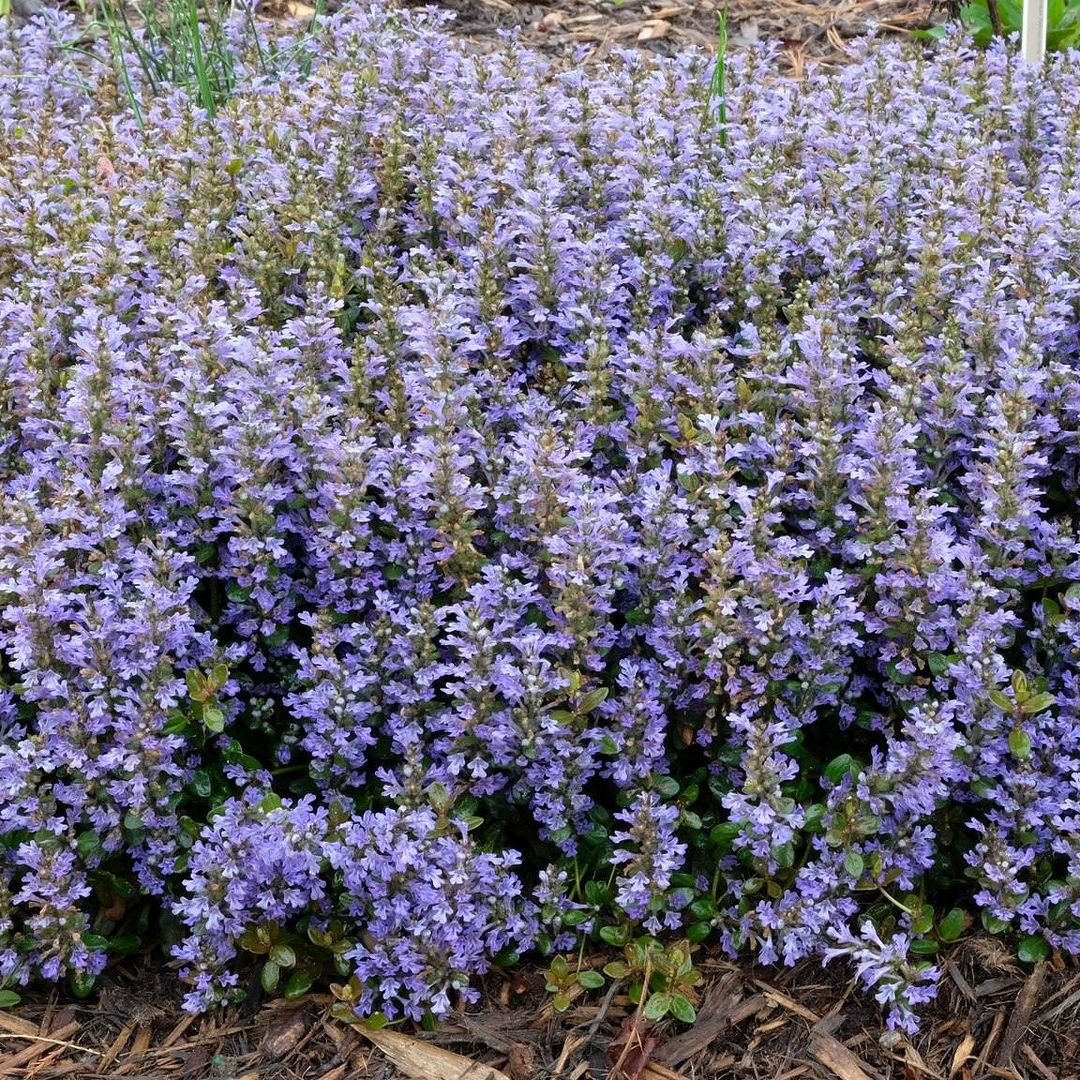
Here’s a simple and verified chart with detailed information about Ajuga:
| Category | Information |
|---|---|
| Botanical Name | Ajuga reptans |
| Common Name | Ajuga, Bugleweed, Carpet Bugle |
| Plant Type | Herbaceous perennial |
| Hardiness Zone | USDA Zones 3-10 |
| Sun Exposure | Partial shade to full shade |
| Soil Type | Moist, well-drained soil |
| Watering | Regular watering; prefers moist soil |
| Growth Habit | Low-growing, spreading ground cover |
| Height/Spread | 3-6 inches tall / 6-12 inches spread |
| Special Features | Fast-growing, ground cover, colorful foliage (purple, bronze), blue flower spikes, erosion control, low maintenance |
- Height: 4-6 inches
- Spread: 12-18 inches
- Sun: Partial to full shade
- USDA Hardiness Zones: 3-10
Also known as bugleweed, ajuga offers colorful foliage and blue flower spikes. It’s an excellent choice for shady areas.
5. Pachysandra
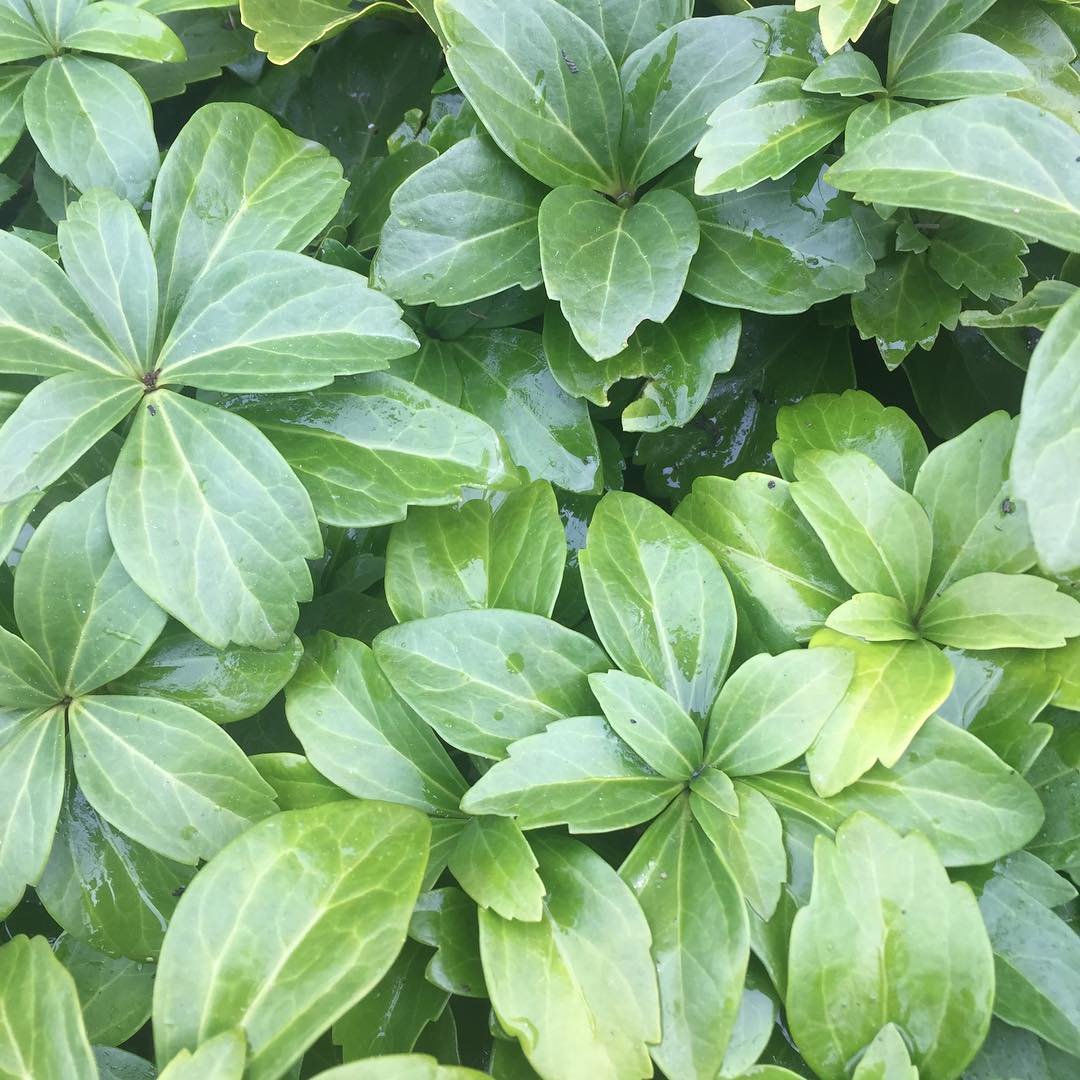
Here’s a simple and verified chart with detailed information about Pachysandra:
| Category | Information |
|---|---|
| Botanical Name | Pachysandra terminalis |
| Common Name | Pachysandra, Japanese Spurge |
| Plant Type | Evergreen perennial ground cover |
| Hardiness Zone | USDA Zones 4-8 |
| Sun Exposure | Partial shade to full shade |
| Soil Type | Moist, well-drained soil |
| Watering | Regular watering; prefers consistently moist soil |
| Growth Habit | Low-growing, spreading ground cover |
| Height/Spread | 6-12 inches tall / 12-18 inches spread |
| Special Features | Evergreen foliage, erosion control, low maintenance, dense ground cover, white flowers in spring |
- Height: 6-12 inches
- Spread: 12-18 inches
- Sun: Partial to full shade
- USDA Hardiness Zones: 5-9
Pachysandra is an evergreen ground cover with glossy leaves and small white flowers. It’s ideal for shady woodland gardens.
6. Vinca Minor
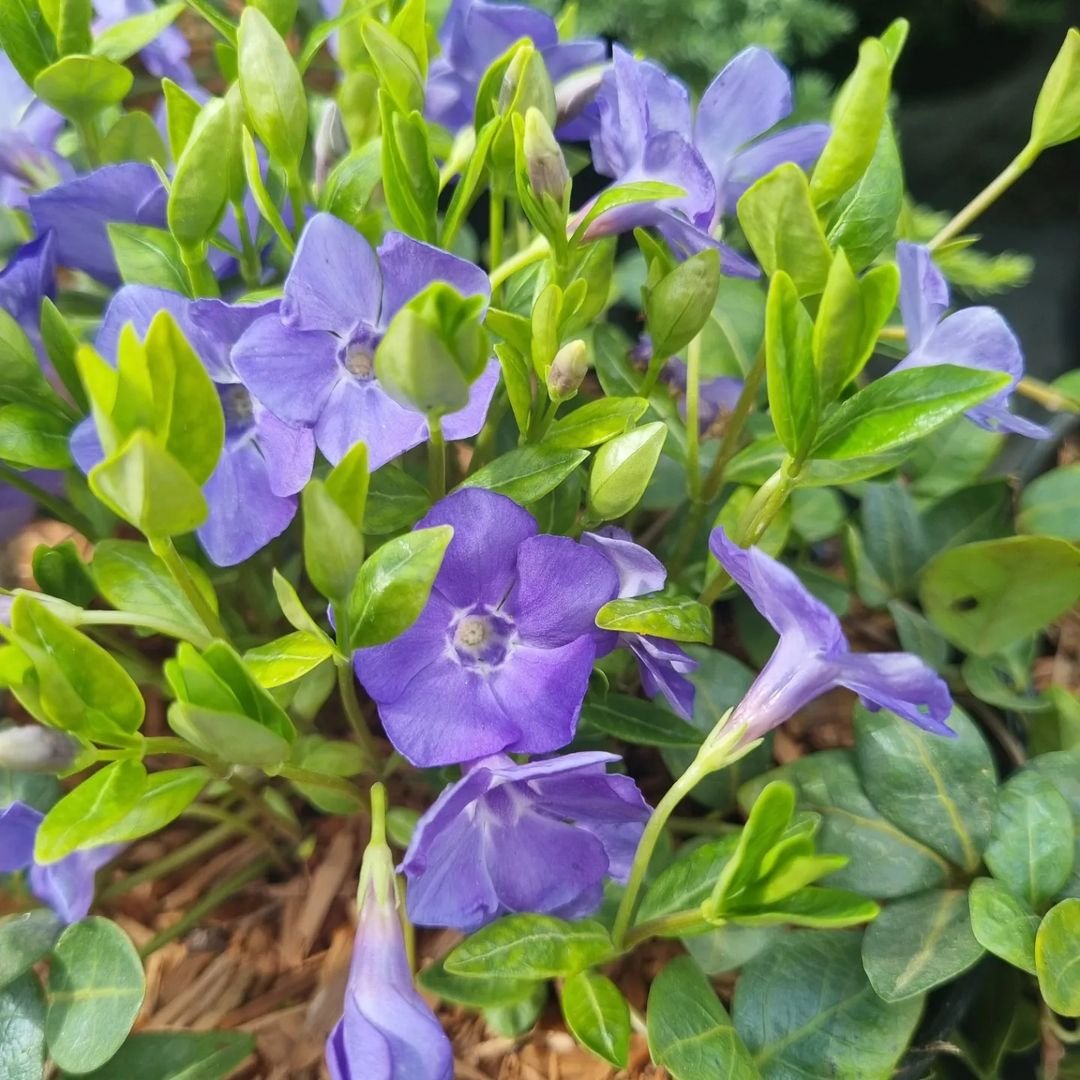
Here’s a simple and verified chart with detailed information about Vinca Minor:
| Category | Information |
|---|---|
| Botanical Name | Vinca minor |
| Common Name | Vinca Minor, Periwinkle, Creeping Myrtle |
| Plant Type | Evergreen perennial ground cover |
| Hardiness Zone | USDA Zones 4-9 |
| Sun Exposure | Partial shade to full shade |
| Soil Type | Well-drained soil, adaptable to various soil types |
| Watering | Moderate; drought-tolerant once established |
| Growth Habit | Low-growing, trailing ground cover |
| Height/Spread | 3-6 inches tall / 12-18 inches spread |
| Special Features | Evergreen foliage, erosion control, low maintenance, blue or purple flowers in spring and summer |
- Height: 4-6 inches
- Spread: 18-24 inches
- Sun: Partial to full shade
- USDA Hardiness Zones: 4-9
Also known as periwinkle, vinca minor features glossy, dark green leaves and pretty blue flowers. It’s a vigorous grower that works well in shady areas.
7. Lamb’s Ear
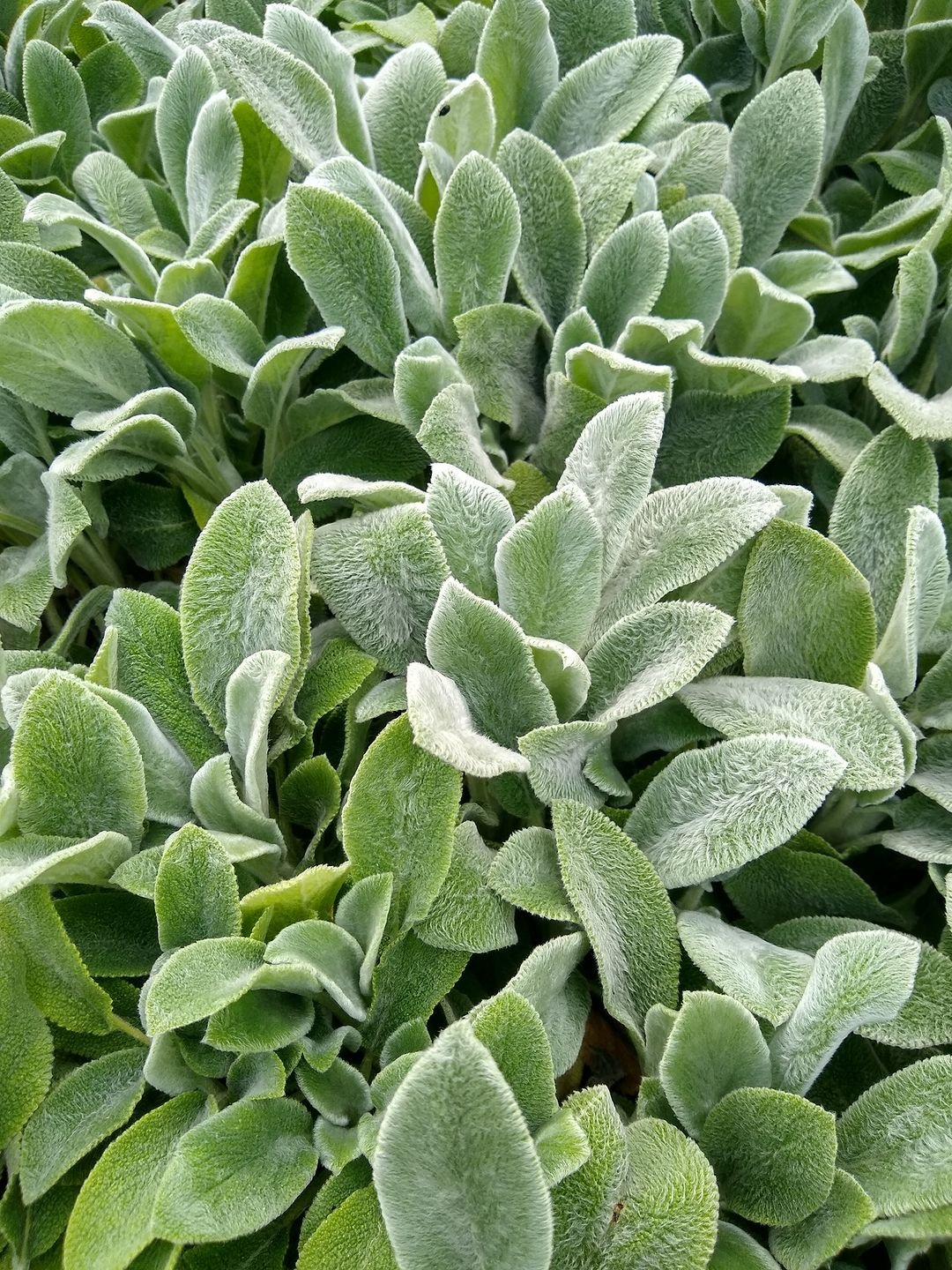
Here’s a simple and verified chart with detailed information about Lamb’s Ear:
| Category | Information |
|---|---|
| Botanical Name | Stachys byzantina |
| Common Name | Lamb’s Ear |
| Plant Type | Herbaceous perennial |
| Hardiness Zone | USDA Zones 4-9 |
| Sun Exposure | Full sun to partial shade |
| Soil Type | Well-drained, sandy or loamy soil |
| Watering | Low; drought-tolerant once established |
| Growth Habit | Low-growing, clumping ground cover |
| Height/Spread | 6-12 inches tall / 12-18 inches spread |
| Special Features | Soft, fuzzy silver-gray foliage, drought-tolerant, deer-resistant, low maintenance, attractive in borders or as ground cover |
- Height: 6-8 inches
- Spread: 12-18 inches
- Sun: Full sun
- USDA Hardiness Zones: 4-8
Lamb’s ear is known for its soft, fuzzy, silver-gray leaves. It’s drought-tolerant and adds interesting texture to the garden.
8. Mondo Grass
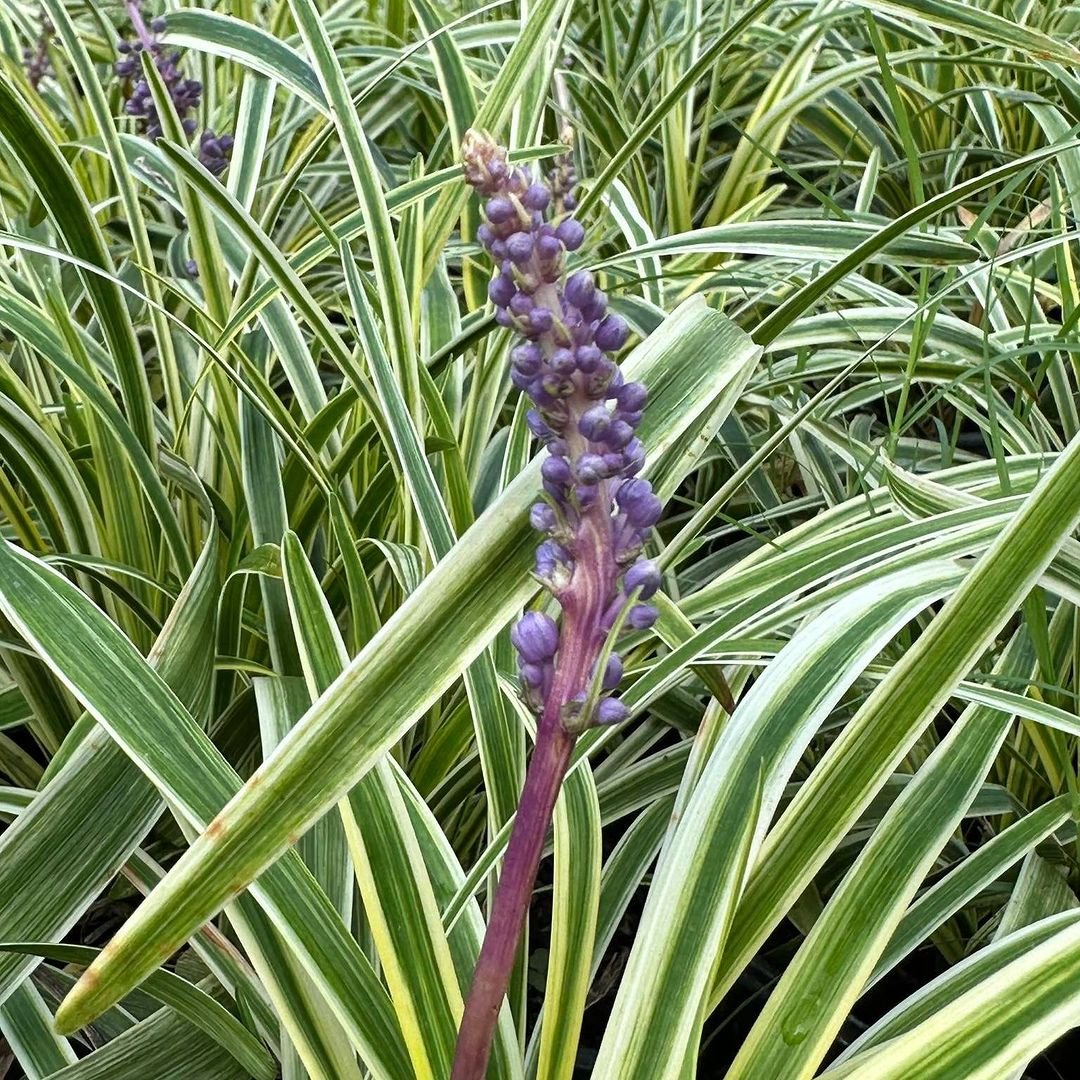
Here’s a simple and verified chart with detailed information about Mondo Grass:
| Category | Information |
|---|---|
| Botanical Name | Ophiopogon japonicus |
| Common Name | Mondo Grass, Monkey Grass |
| Plant Type | Evergreen perennial ground cover |
| Hardiness Zone | USDA Zones 6-11 |
| Sun Exposure | Partial shade to full shade |
| Soil Type | Well-drained, slightly acidic soil |
| Watering | Moderate; prefers consistently moist soil but can tolerate some drought |
| Growth Habit | Clumping, grass-like ground cover |
| Height/Spread | 6-12 inches tall / 6-12 inches spread |
| Special Features | Evergreen foliage, low maintenance, drought-tolerant once established, small blue or white flowers, erosion control |
- Height: 6-10 inches
- Spread: 12-18 inches
- Sun: Partial to full shade
- USDA Hardiness Zones: 6-11
Mondo grass forms dense clumps of grass-like foliage. It’s a low-maintenance option for shady areas and comes in green and black varieties.
9. Creeping Phlox
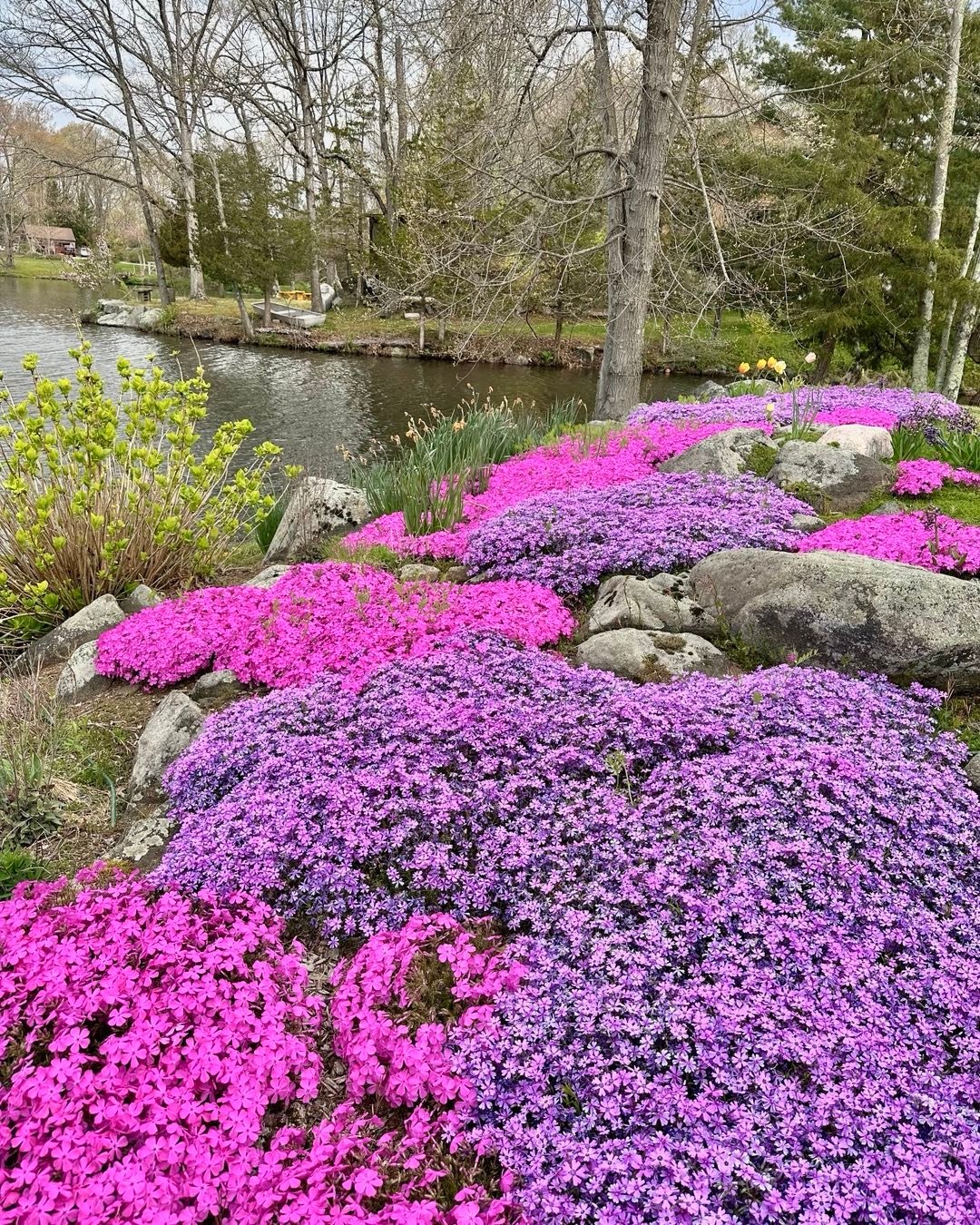
Here’s a simple and verified chart with detailed information about Creeping Phlox:
| Category | Information |
|---|---|
| Botanical Name | Phlox subulata |
| Common Name | Creeping Phlox, Moss Phlox |
| Plant Type | Herbaceous perennial |
| Hardiness Zone | USDA Zones 3-9 |
| Sun Exposure | Full sun to partial shade |
| Soil Type | Well-drained, sandy or loamy soil |
| Watering | Moderate; prefers evenly moist soil |
| Growth Habit | Low-growing, spreading ground cover |
| Height/Spread | 4-6 inches tall / 12-18 inches spread |
| Special Features | Dense mat of foliage, vibrant spring flowers (pink, purple, white), attracts pollinators, erosion control, low maintenance |
- Height: 4-6 inches
- Spread: 18-24 inches
- Sun: Full sun
- USDA Hardiness Zones: 3-9
Creeping phlox produces a carpet of colorful flowers in spring. It’s excellent for rock gardens and sunny slopes.
10. Sweet Woodruff
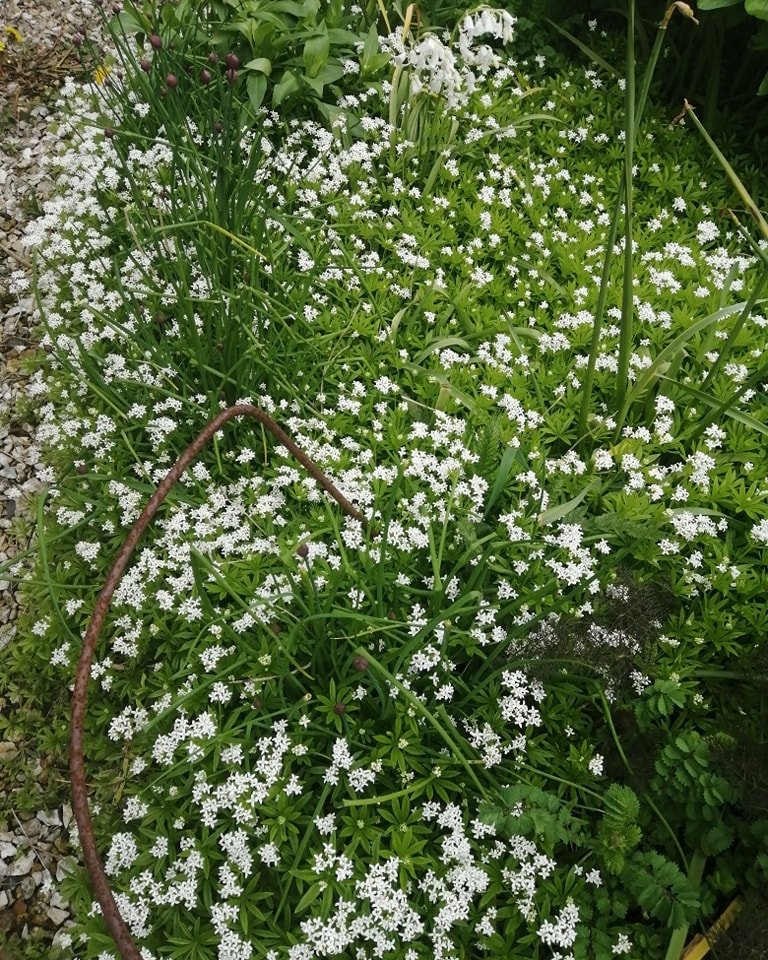
Here’s a simple and verified chart with detailed information about Sweet Woodruff:
| Category | Information |
|---|---|
| Botanical Name | Galium odoratum |
| Common Name | Sweet Woodruff, Woodruff |
| Plant Type | Herbaceous perennial |
| Hardiness Zone | USDA Zones 4-8 |
| Sun Exposure | Partial shade to full shade |
| Soil Type | Moist, well-drained soil |
| Watering | Regular watering; prefers consistently moist soil |
| Growth Habit | Low-growing, spreading ground cover |
| Height/Spread | 6-12 inches tall / 12-18 inches spread |
| Special Features | Fragrant foliage, white star-shaped flowers in spring, attractive ground cover, shade tolerant, deer-resistant |
- Height: 6-12 inches
- Spread: 12-18 inches
- Sun: Partial to full shade
- USDA Hardiness Zones: 4-8
Sweet woodruff features whorls of fragrant leaves and delicate white flowers. It’s perfect for shady woodland gardens.
11. Creeping Juniper
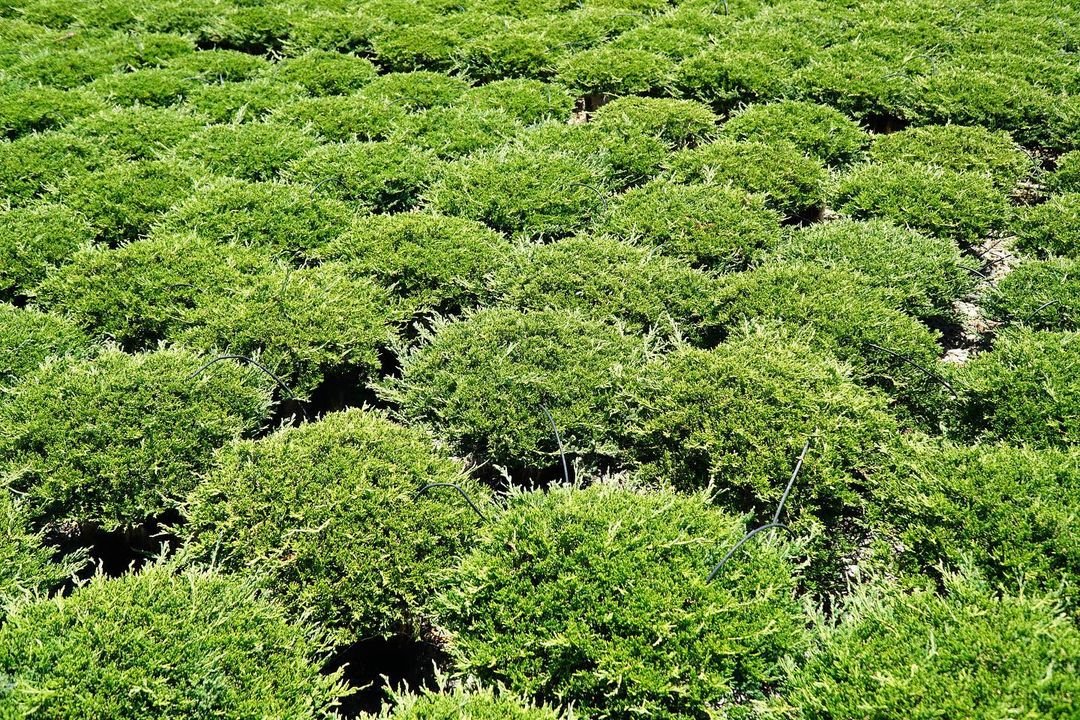
Here’s a simple and verified chart with detailed information about Creeping Juniper:
| Category | Information |
|---|---|
| Botanical Name | Juniperus horizontalis |
| Common Name | Creeping Juniper, Ground Juniper |
| Plant Type | Evergreen perennial shrub |
| Hardiness Zone | USDA Zones 3-9 |
| Sun Exposure | Full sun |
| Soil Type | Well-drained soil, adaptable to various soil types |
| Watering | Low; drought-tolerant once established |
| Growth Habit | Low-growing, spreading ground cover |
| Height/Spread | 6-12 inches tall / 4-6 feet spread |
| Special Features | Evergreen foliage, drought-tolerant, erosion control, low maintenance, attractive for ground cover and rock gardens |
- Height: 6-18 inches
- Spread: 6-8 feet
- Sun: Full sun
- USDA Hardiness Zones: 3-9
Creeping juniper is an evergreen ground cover that’s excellent for slopes and rocky areas. It’s very drought-tolerant once established.
12. Irish Moss
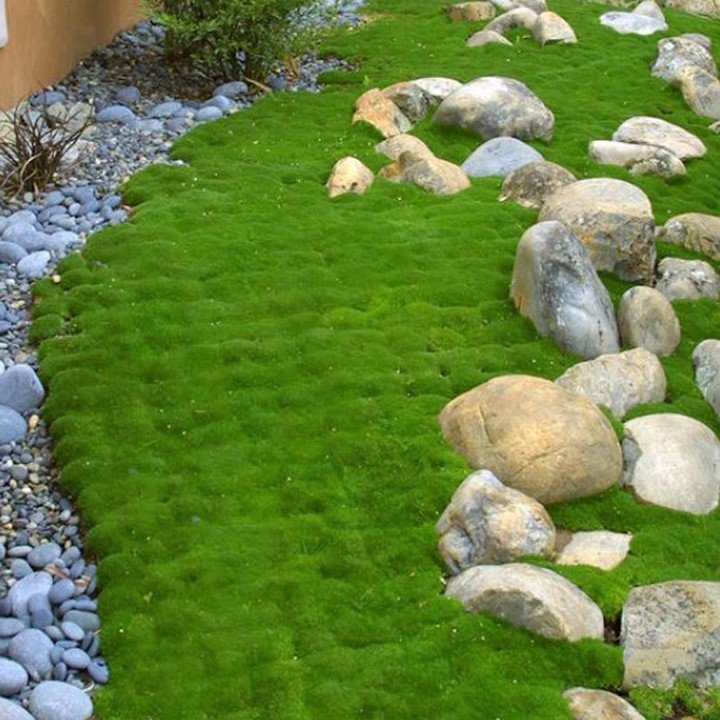
Here’s a simple and verified chart with detailed information about Irish Moss:
| Category | Information |
|---|---|
| Botanical Name | Sagina subulata |
| Common Name | Irish Moss, Scotch Moss |
| Plant Type | Herbaceous perennial |
| Hardiness Zone | USDA Zones 4-10 |
| Sun Exposure | Full sun to partial shade |
| Soil Type | Well-drained, sandy or loamy soil |
| Watering | Moderate; prefers consistently moist soil |
| Growth Habit | Low-growing, mat-forming ground cover |
| Height/Spread | 1-2 inches tall / 12-18 inches spread |
| Special Features | Dense, lush green mat, attractive ground cover, soft texture, good for between stepping stones or in rock gardens |
- Height: 1-2 inches
- Spread: 12-18 inches
- Sun: Full sun to partial shade
- USDA Hardiness Zones: 4-8
Irish moss forms a dense, moss-like carpet with tiny white flowers. It’s perfect for filling in between stepping stones.
13. Lily of the Valley
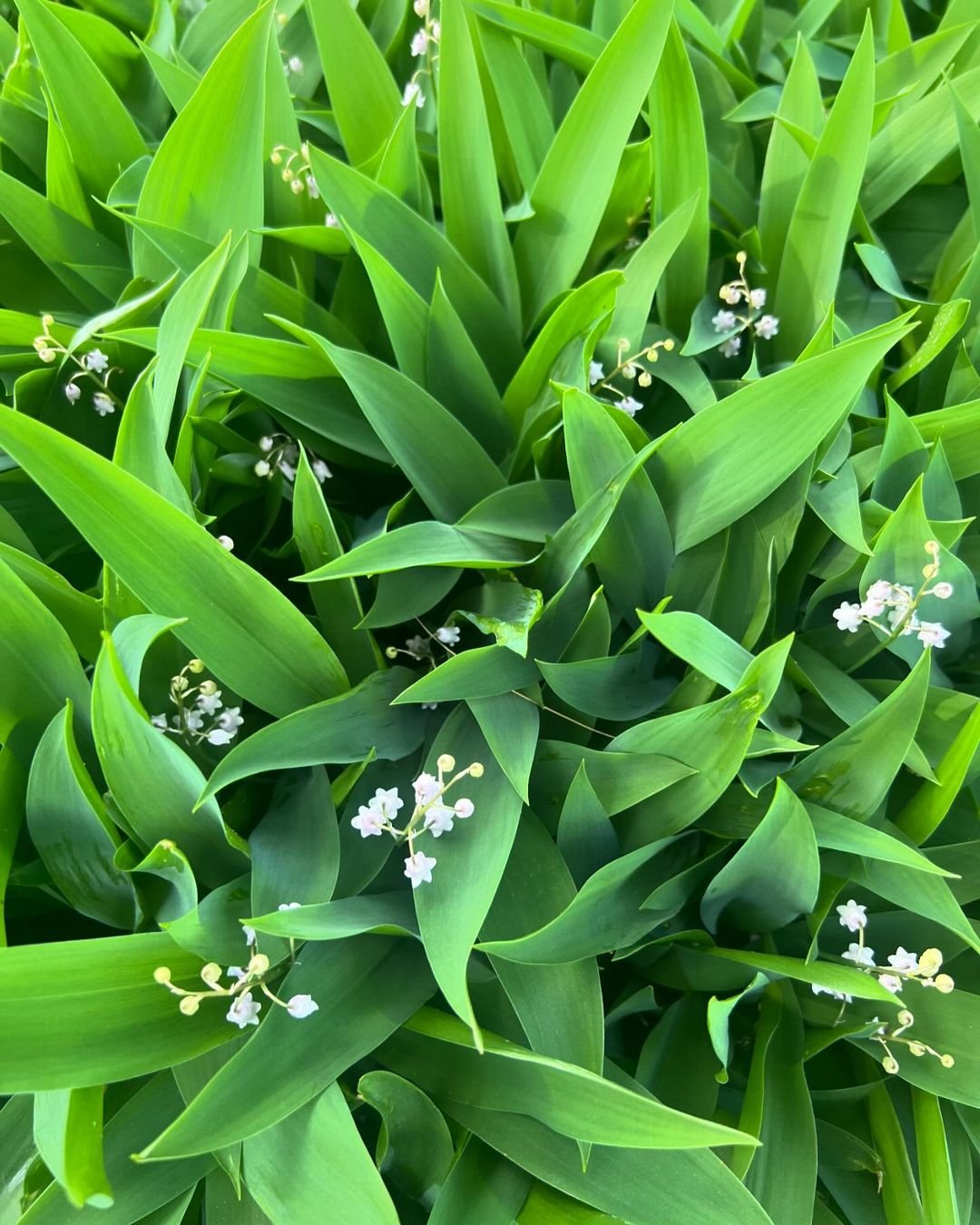
Here’s a simple and verified chart with detailed information about Lily of the Valley:
| Category | Information |
|---|---|
| Botanical Name | Convallaria majalis |
| Common Name | Lily of the Valley |
| Plant Type | Herbaceous perennial |
| Hardiness Zone | USDA Zones 3-7 |
| Sun Exposure | Partial shade to full shade |
| Soil Type | Moist, well-drained soil |
| Watering | Regular watering; prefers consistently moist soil |
| Growth Habit | Clumping, spreading ground cover |
| Height/Spread | 6-12 inches tall / 12-18 inches spread |
| Special Features | Fragrant white bell-shaped flowers in spring, evergreen foliage, good for shaded areas, can be invasive |
- Height: 6-12 inches
- Spread: 12-18 inches
- Sun: Partial to full shade
- USDA Hardiness Zones: 3-8
Lily of the valley produces fragrant, bell-shaped white flowers. It’s an excellent choice for shady woodland gardens but can be invasive in some areas.
14. Bearberry
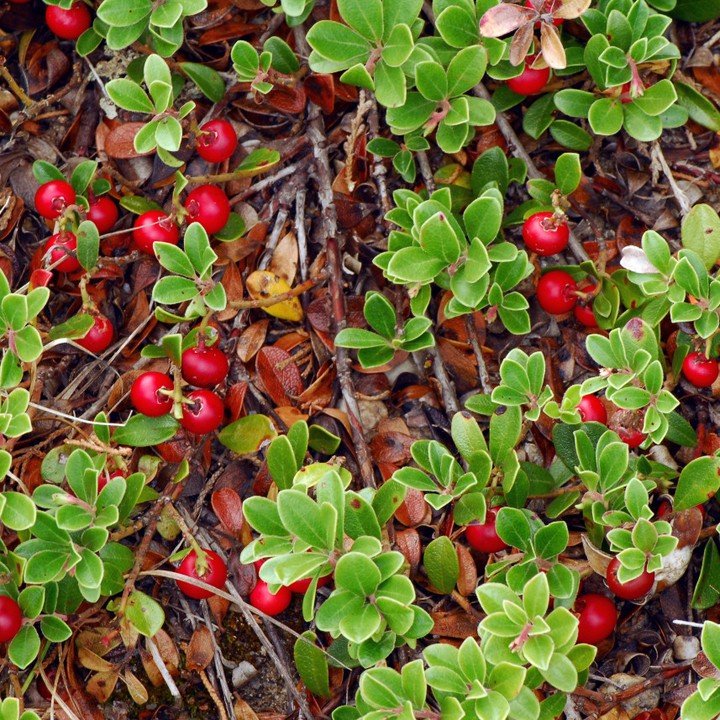
Here’s a simple and verified chart with detailed information about Bearberry:
| Category | Information |
|---|---|
| Botanical Name | Arctostaphylos uva-ursi |
| Common Name | Bearberry, Kinnikinnick |
| Plant Type | Evergreen shrub |
| Hardiness Zone | USDA Zones 2-6 |
| Sun Exposure | Full sun to partial shade |
| Soil Type | Well-drained, sandy or acidic soil |
| Watering | Low; drought-tolerant once established |
| Growth Habit | Low-growing, spreading ground cover |
| Height/Spread | 6-12 inches tall / 12-24 inches spread |
| Special Features | Evergreen foliage, red berries, good for ground cover and erosion control, attracts wildlife, low maintenance |
- Height: 6-12 inches
- Spread: 3-6 feet
- Sun: Full sun to partial shade
- USDA Hardiness Zones: 2-6
Bearberry is an evergreen ground cover with small, glossy leaves and red berries. It’s excellent for poor, sandy soils.
15. Hens and Chicks
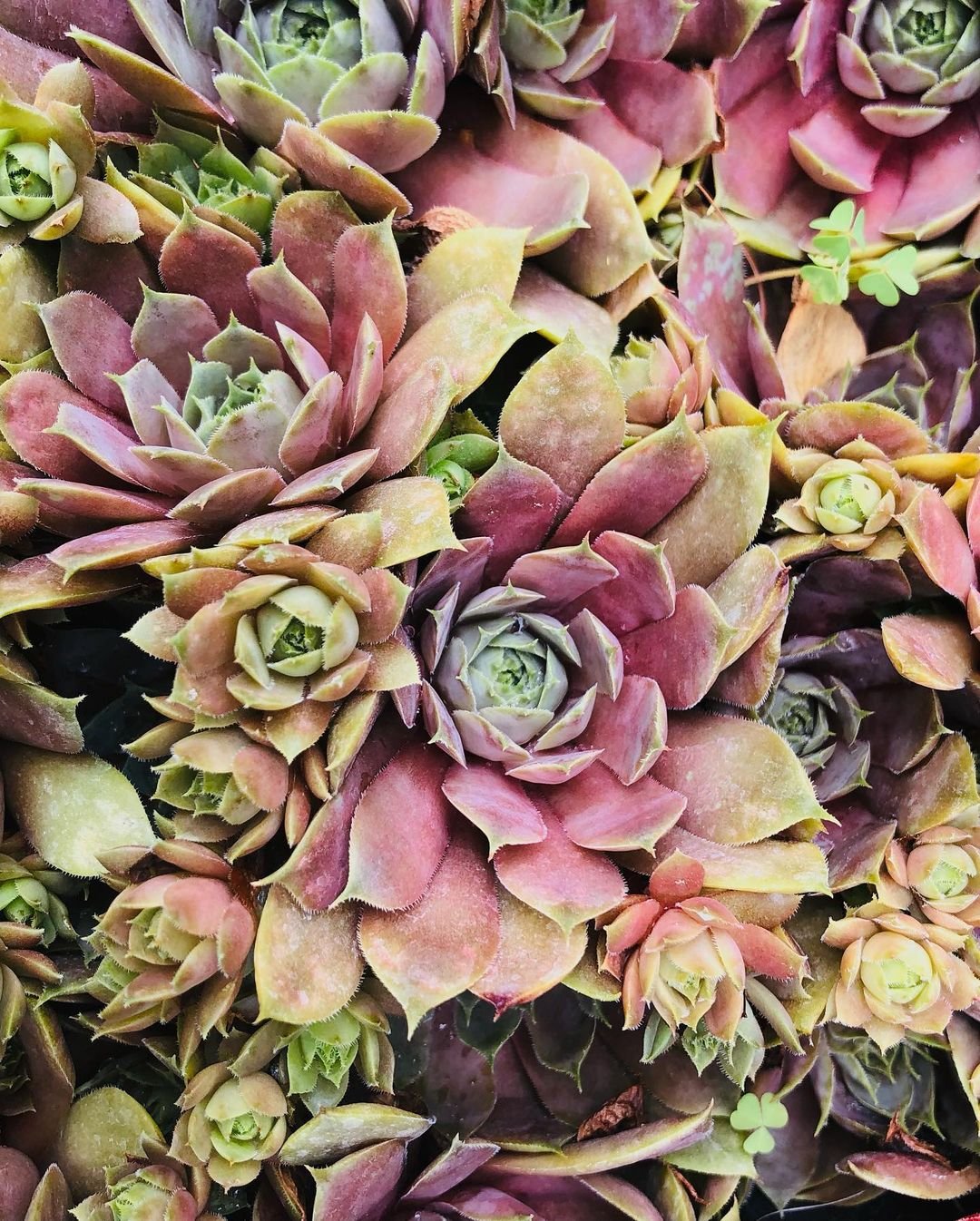
Here’s a simple and verified chart with detailed information about Hens and Chicks:
| Category | Information |
|---|---|
| Botanical Name | Sempervivum tectorum |
| Common Name | Hens and Chicks, Houseleek |
| Plant Type | Succulent perennial |
| Hardiness Zone | USDA Zones 3-11 |
| Sun Exposure | Full sun to partial shade |
| Soil Type | Well-drained, sandy or rocky soil |
| Watering | Low; drought-tolerant once established |
| Growth Habit | Rosette-forming, clumping ground cover |
| Height/Spread | 2-6 inches tall / 6-12 inches spread |
| Special Features | Attractive rosettes, evergreen, low maintenance, produces offsets (chicks) around the central rosette (hen), excellent for containers and rock gardens |
- Height: 2-4 inches
- Spread: 6-12 inches
- Sun: Full sun
- USDA Hardiness Zones: 3-8
Hens and chicks are succulent plants that form rosettes. They’re perfect for rock gardens and drought-tolerant landscapes.
16. Mazus
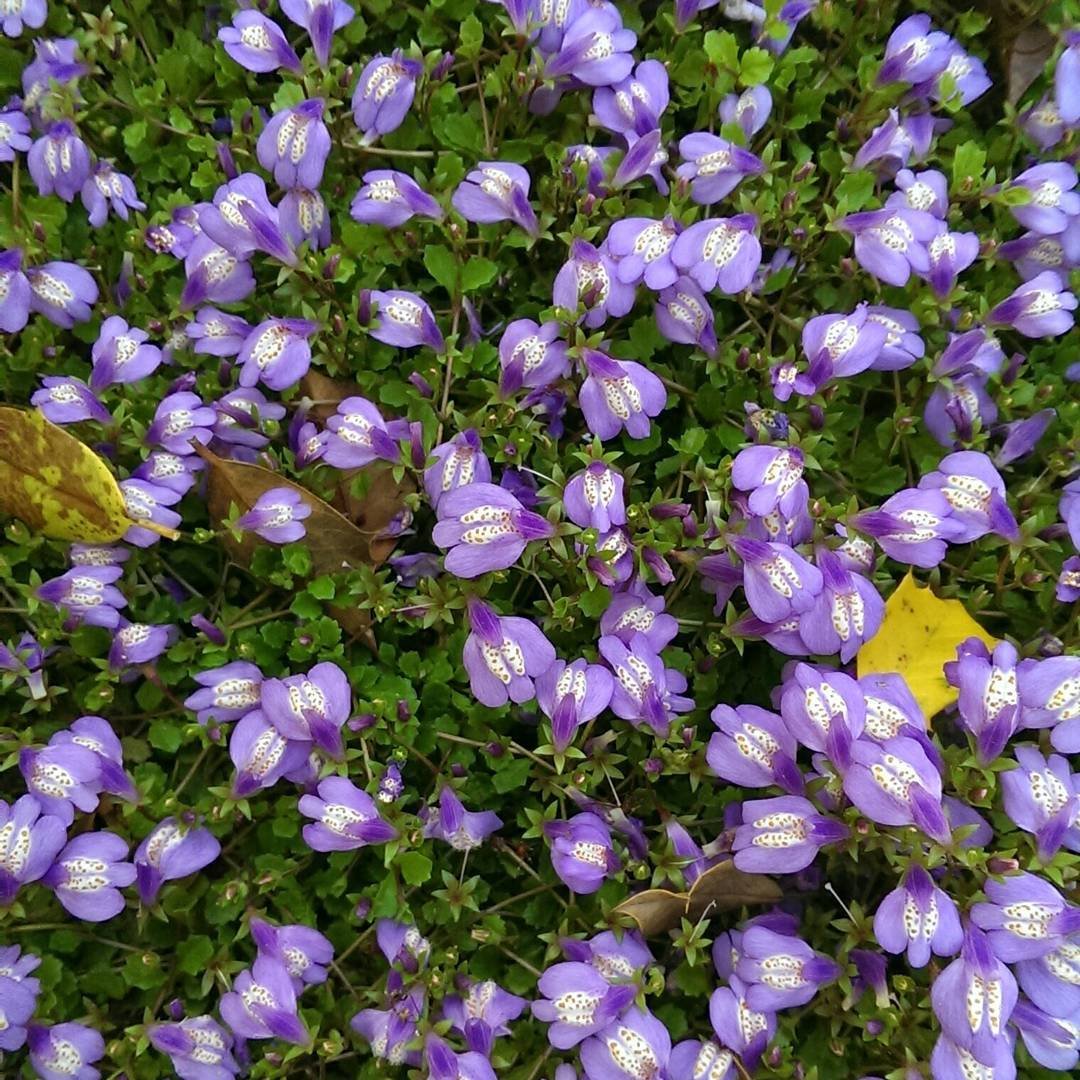
Here’s a simple and verified chart with detailed information about Mazus:
| Category | Information |
|---|---|
| Botanical Name | Mazus reptans |
| Common Name | Mazus |
| Plant Type | Herbaceous perennial ground cover |
| Hardiness Zone | USDA Zones 4-9 |
| Sun Exposure | Full sun to partial shade |
| Soil Type | Well-drained, moist soil |
| Watering | Moderate; prefers evenly moist soil |
| Growth Habit | Low-growing, spreading ground cover |
| Height/Spread | 1-2 inches tall / 12-18 inches spread |
| Special Features | Small, tubular flowers, attractive ground cover, low maintenance, good for between stepping stones or in shaded areas |
- Height: 2-3 inches
- Spread: 12-18 inches
- Sun: Full sun to partial shade
- USDA Hardiness Zones: 5-8
Mazus forms a dense mat of foliage with small purple or white flowers. It’s excellent for moist areas and can tolerate light foot traffic.
17. Golden Creeping Jenny
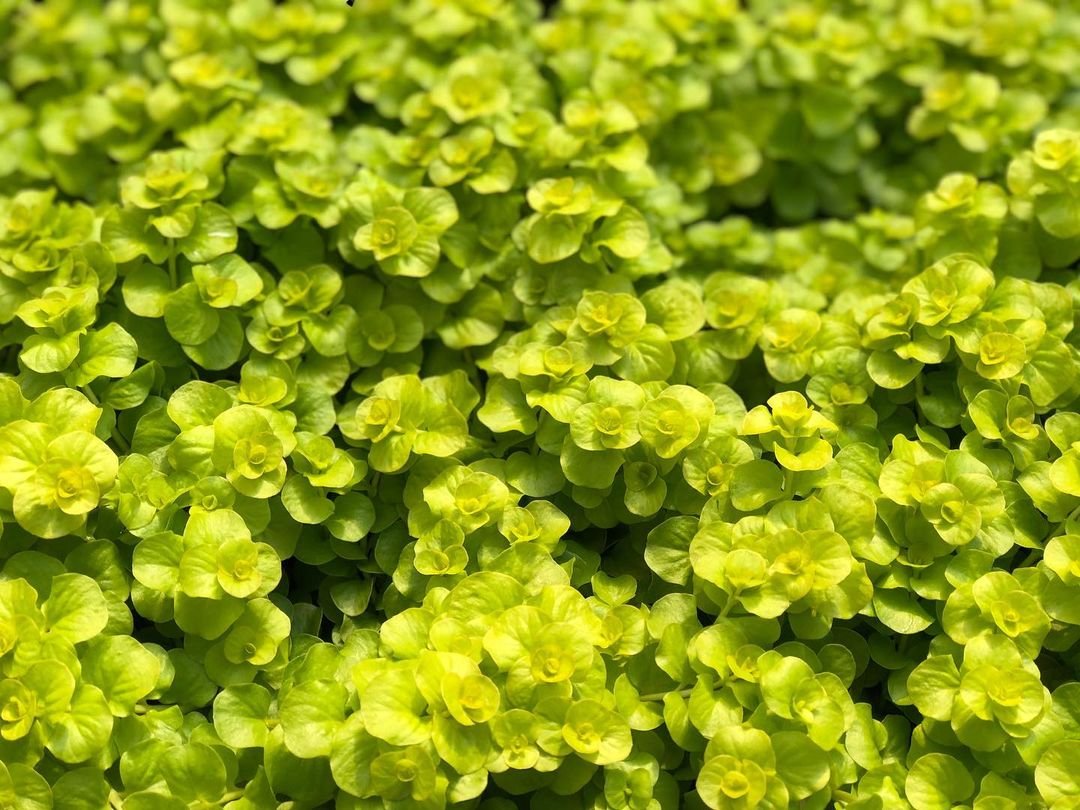
Here’s a simple and verified chart with detailed information about Golden Creeping Jenny:
| Category | Information |
|---|---|
| Botanical Name | Lysimachia nummularia ‘Aurea’ |
| Common Name | Golden Creeping Jenny |
| Plant Type | Herbaceous perennial ground cover |
| Hardiness Zone | USDA Zones 4-9 |
| Sun Exposure | Full sun to partial shade |
| Soil Type | Moist, well-drained soil |
| Watering | Regular watering; prefers consistently moist soil |
| Growth Habit | Low-growing, trailing ground cover |
| Height/Spread | 4-6 inches tall / 12-18 inches spread |
| Special Features | Bright golden-yellow foliage, fast-growing, attractive in shaded areas or as a ground cover, provides seasonal color, low maintenance |
- Height: 2-4 inches
- Spread: 18-24 inches
- Sun: Full sun to partial shade
- USDA Hardiness Zones: 3-9
This variety of creeping Jenny features bright golden foliage. It’s perfect for adding color to moist areas or container gardens.
18. Creeping Wire Vine
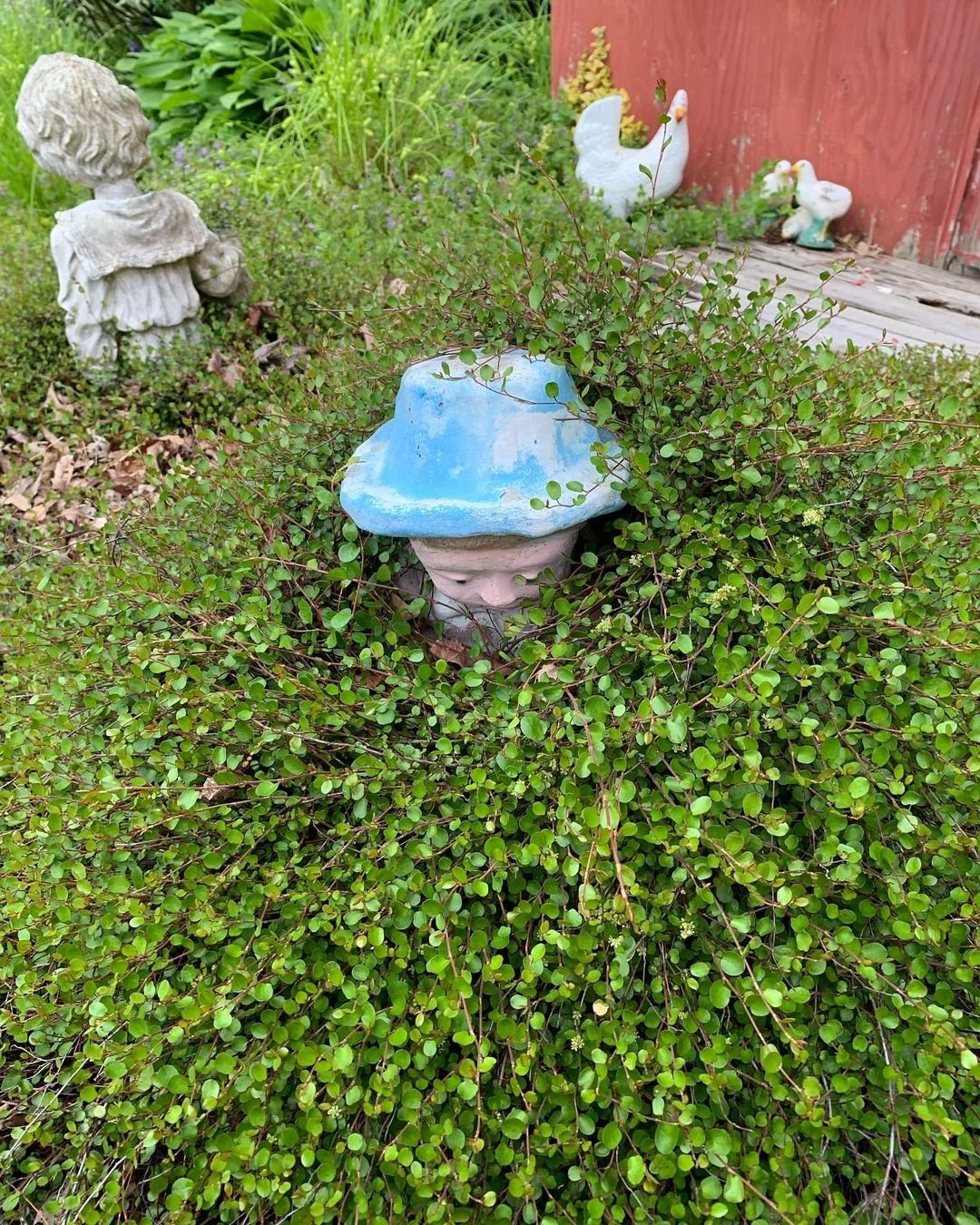
Here’s a simple and verified chart with detailed information about Creeping Wire Vine:
| Category | Information |
|---|---|
| Botanical Name | Muehlenbeckia complexa |
| Common Name | Creeping Wire Vine, Maidenhair Vine |
| Plant Type | Evergreen perennial ground cover |
| Hardiness Zone | USDA Zones 6-10 |
| Sun Exposure | Full sun to partial shade |
| Soil Type | Well-drained soil, adaptable to various soil types |
| Watering | Moderate; drought-tolerant once established |
| Growth Habit | Low-growing, spreading ground cover |
| Height/Spread | 2-4 inches tall / 12-24 inches spread |
| Special Features | Fine, wiry foliage, dense mat-forming, attractive in containers, good for ground cover or trailing in baskets, low maintenance |
- Height: 2-4 inches
- Spread: 3-6 feet
- Sun: Full sun to partial shade
- USDA Hardiness Zones: 6-9
Creeping wire vine has small, round leaves on wiry stems. It’s an excellent choice for cascading over walls or filling in between stepping stones.
19. Dragon’s Blood Sedum
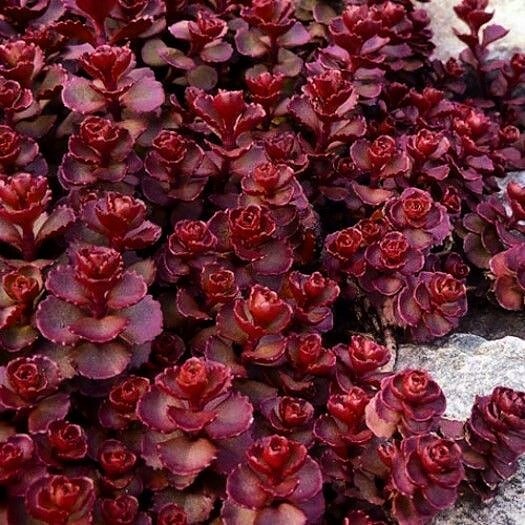
Here’s a simple and verified chart with detailed information about Dragon’s Blood Sedum:
| Category | Information |
|---|---|
| Botanical Name | Sedum spurium ‘Dragon’s Blood’ |
| Common Name | Dragon’s Blood Sedum |
| Plant Type | Succulent perennial |
| Hardiness Zone | USDA Zones 3-9 |
| Sun Exposure | Full sun to partial shade |
| Soil Type | Well-drained, sandy or rocky soil |
| Watering | Low; drought-tolerant once established |
| Growth Habit | Mat-forming, spreading ground cover |
| Height/Spread | 4-6 inches tall / 12-18 inches spread |
| Special Features | Drought-tolerant, attracts pollinators, vibrant red foliage in fall, low maintenance |
- Height: 4-6 inches
- Spread: 12-18 inches
- Sun: Full sun
- USDA Hardiness Zones: 3-9
This sedum variety features dark red foliage and pink flowers. It’s drought-tolerant and perfect for rock gardens.
20. Corsican Mint
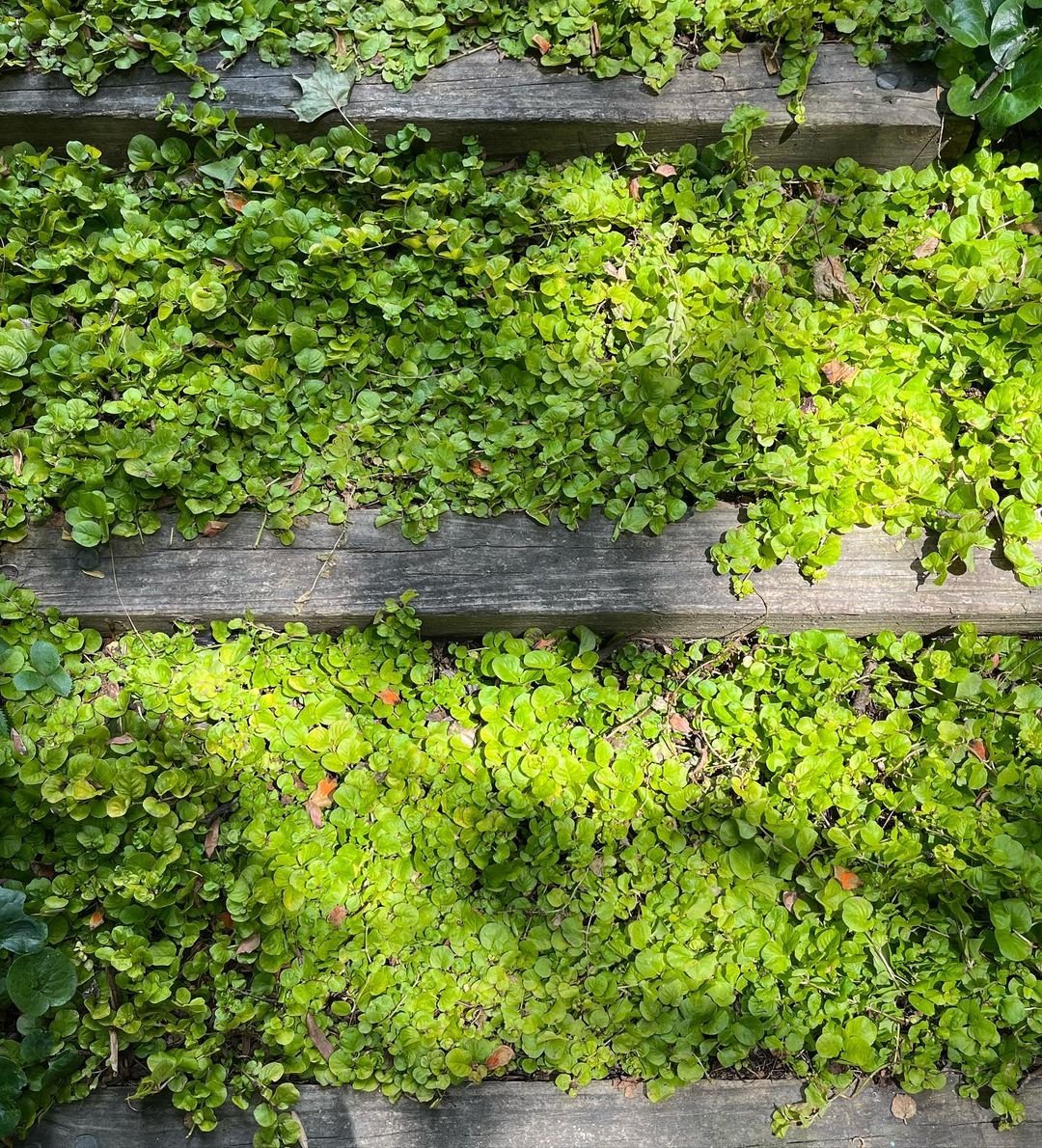
Here’s a simple and verified chart with detailed information about Corsican Mint:
| Category | Information |
|---|---|
| Botanical Name | Mentha requienii |
| Common Name | Corsican Mint |
| Plant Type | Herbaceous perennial |
| Hardiness Zone | USDA Zones 6-9 |
| Sun Exposure | Partial shade to full sun |
| Soil Type | Moist, well-drained soil |
| Watering | Regular watering; keep soil moist |
| Growth Habit | Low-growing, spreading ground cover |
| Height/Spread | 1-2 inches tall / 6-12 inches spread |
| Special Features | Fragrant, attracts pollinators, edible leaves, good for ground cover |
- Height: 1/4-1/2 inch
- Spread: 12-18 inches
- Sun: Partial shade
- USDA Hardiness Zones: 6-9
Corsican mint forms a very low, fragrant carpet. It’s perfect for filling in between stepping stones and releases a minty scent when walked on.
Tips for Planting and Maintaining Ground Covers
To ensure success with your ground cover plants:
- Prepare the soil well before planting
- Space plants according to their mature spread
- Water regularly until established
- Mulch to retain moisture and suppress weeds
- Control weeds until the ground cover fills in
- Trim or divide as needed to maintain desired appearance
Ground cover plants offer a beautiful, low-maintenance solution for many garden challenges. From sunny slopes to shady woodland areas, there’s a ground cover plant suited to almost every garden condition. By choosing the right plants for your specific needs and providing proper care, you can create a lush, attractive landscape that requires minimal upkeep.
Remember to consider factors like sunlight, soil type, and moisture levels when selecting ground covers for your garden. With the right choices and care, these versatile plants will provide years of beauty and functional benefits to your outdoor space.
For more gardening tips and plant care guides, visit https://usagardenweb.com/

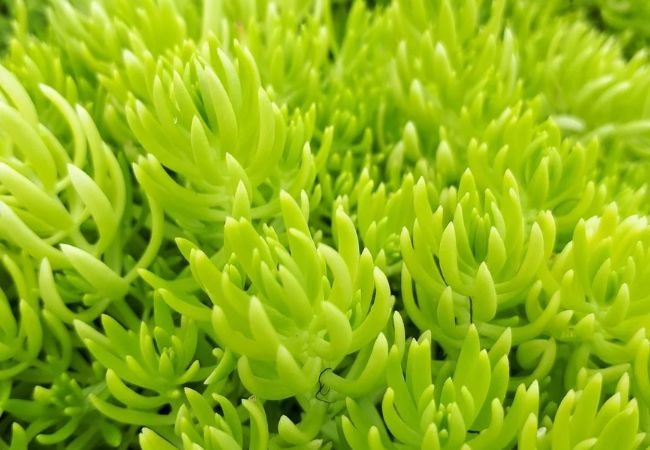





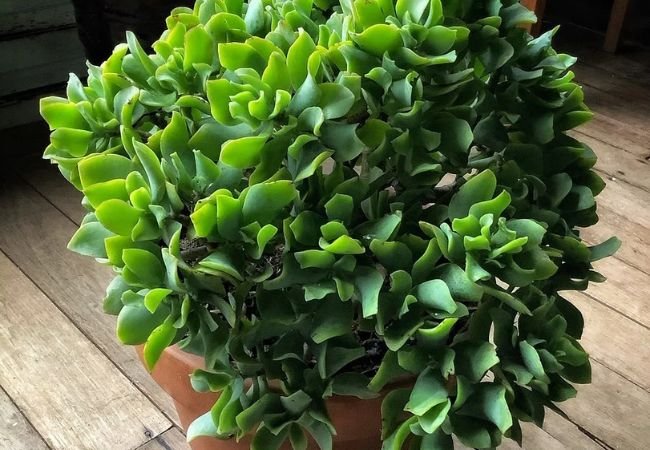
Leave a Reply